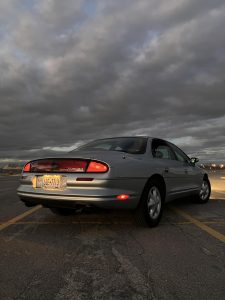Out of Reach: Low-Income Barriers to Abortion Access
June 11, 2023
According to research of the Guttmacher Institute, three out of four women—or 75 percent—of abortion patients come from low-income backgrounds. However, now that the Supreme Court has overturned the constitutional right to abortion, large swaths of the American population are finding the procedure progressively out of reach, facing long distances and the travel costs barring them.
An abortion procedure itself comes with a hefty price tag, with the National Abortion Federation (NAF) stating the average cost of a first-trimester aspiration abortion is $508, while a medication abortion averages $535. A second-trimester abortion can cost more than $2,000.
This cost could increase for thousands of people who now also need to factor in travel expenses: those living in Texas, Louisiana, Mississippi, Alabama, Arkansas, Georgia, South Carolina, Tennessee and more — all states that have enacted hostile abortion laws, restricting or outright banning the procedure. Additional barriers encompass lost wages during the time of travel and expenses for childcare, not only transportation but also accommodation.
Take, for example, Alabama, which began enforcing a total abortion ban after Roe was overturned. The closest state to Alabama that offers legal abortions is Florida, which has its own restrictive 15-week abortion law in place. After that, the nearest state would be Illinois, which has enshrined the right to abortion within the state’s constitution.
However, Illinois is more than 700 miles away from Alabama — about a 12-hour drive.
That means a trip to Illinois for many Alabama residents will require time off from work, child care accommodations and even a plane ticket and hotel stay, all things that can be costly for a low-income person or family.
The Chicago Abortion Fund (CAF) told Changing America that during the first quarter of this year, 80 percent of the calls it received were from outside of Illinois — including Wisconsin, Kentucky, Ohio, Arizona, Tennessee, Louisiana and Texas.
“I would say that pretty much everyone who calls the Chicago Abortion Fund is needing financial support to help them access care,” said Qudsiyyah Shariyf, deputy director of CAF.
Shariyf said the financial needs span from the cost of the abortion appointment itself to having money to travel out-of-state to a legal abortion provider or being able to pay for child care during the process.
Though, even then, patients in states that have not completely banned abortion often have to navigate burdensome and medically unnecessary restrictions that can lead to additional costs.
- In the United States, only 33% of the lowest paid workers have access to paid sick days.
The constantly changing legal landscape of abortion in the United States has created fear and confusion regarding the potential legal risks of health care decisions.
- Pregnant people have long faced criminal charges for pregnancy outcomes, including for self-managing an abortion.
- People who do not have the financial resources to access care from a clinical provider may be more likely to choose to self-manage their abortion, putting themselves at legal risk.
- Black and Indigenous people and immigrants are already disproportionately involved in the criminal legal system because of systemic racism.
Abortion access is further complicated by the lack of available services. In 2017, nearly 90% of all US counties had no abortion provider, and the overturning of Roe has further decreased the number of providers.
It’s a situation that abortion policy and advocacy group Guttmacher Institute predicted, writing in its 2014 report that given 75 percent of abortion patients were poor or low income, “any additional barriers to abortion care—including travel and its associated costs, such as lost wages and expenses for childcare, transportation and accommodations—may be significant for many women.”










